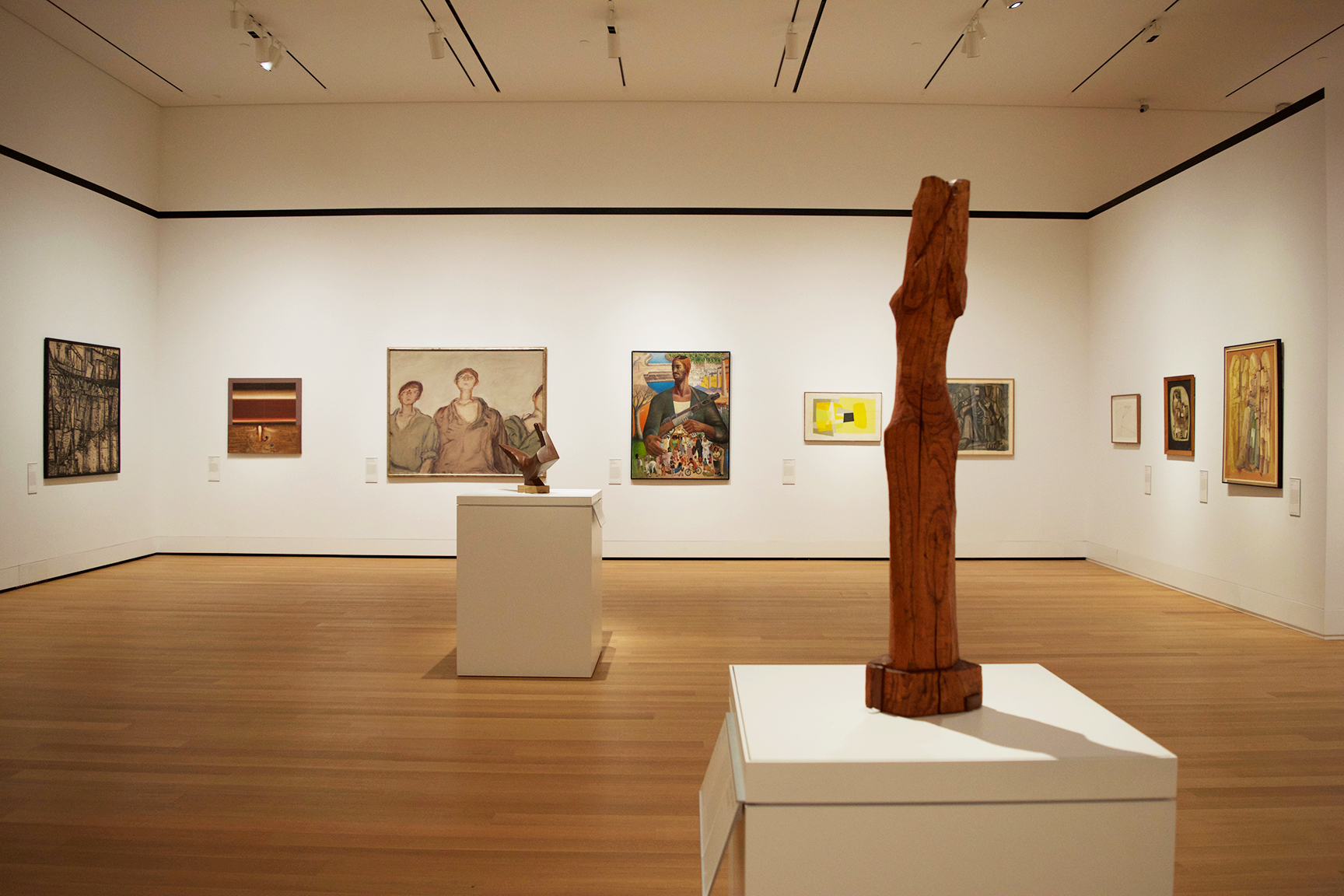
I came to visit the new YUAG exhibit “Modern Art from the Middle East” with a list of questions to ask co-curator and associate professor of Islamic art and architecture Kishwar Rizvi, who had agreed to meet me at the gallery. As we walked through the exhibition and talked about the artwork, I came to realize that the genius of this exhibit is that its pieces didn’t answer my questions — it showed me that they were the wrong ones to ask.
The exhibit shows the work of artists from several Middle Eastern countries from the 1950s through the 1980s. Pan-Arabism, government propaganda, industrialization, displacement and Islam are among the concepts addressed in the show — although the exhibit makes a point, I believe, of representing differences and disagreement in the artists’ perspectives. No single theme unites all of the works on display; each country’s art, and each individual artist, must be read in the context of their own politics and identity.
An intimate portrait by the Syrian artist Marwan Kassab Bachi dominates one wall. Three boys, one only partially within the painting’s frame, gaze outward above the heads of the gallery’s visitors with a combination of anticipation and exhaustion. The background is muted, and the perspective is warped — it seems as though ripples in water disturb the reflection of the boys and the cloudy sky behind them. They could be gallery visitors looking at reflections of themselves. They could be anyone, looking ahead at a difficult and complicated world; no hint in the backdrop or clothing grounds them in a geographical or temporal point. Only the painting’s title — “The Three Palestinian Boys” — specifies what political issue the artist approaches with this work.
Looking around the gallery, many of the other works’ visual vocabularies seemed familiar to me as well, reminiscent of European and American modern art with which I was familiar. I had walked into the gallery expecting to see artwork directly reflecting the era’s politics and ideologies: images glorifying Gamal Abdel Nasser and pan-Arabism, exploring a revitalized Islamic lifestyle and the Muslim Brotherhood’s creed. I had read that many of the artists on show referenced the artwork of ancient civilizations in the Middle East; my aim was to understand how they utilized this aspect of their heritage to make a political statement. Emerging from the era of Western colonialism, did these artists aspire to create an indigenous modernity rooted in their own tradition, and reject Western influences? I didn’t see this in the artwork. I asked Rizvi.
“They see themselves engaging with Europe and America,” said Rizvi. For these artists, she emphasized, different artistic and cultural traditions were part of a kit of tools. “You could use the ancient reference, you could use cubism, you could use this idea of sculptural modernity — you could use all of these different things … They didn’t see it as ‘this belongs to the West, and this belongs to us.’ I don’t think that was really in their minds. I think they really did see themselves as part of the world, at large.”
This group of artists saw themselves as working within the global discourse of modern art — neither importing its European characteristics, nor pointedly rejecting them by interjecting with references to ancient Middle Eastern civilizations. For these artists, modern art was not something European that was alien to the Middle East; modernism was a global and a living tradition, through which they could discuss their Islamic, Arab and nationalist identities. In this way, the exhibition makes the case that it should be located next to and in conversation with modern art of Europe, the United States, and the rest of the world.
Looking at Iraqi artist Mahmoud Sabri’s eerie untitled piece depicting three young men seated around a table in an alley, Rizvi noted that a central theme of modern art, “the idea of being in the city, urban life, is something they’re engaging with. The good and the bad.” Sabri’s painting seems to dwell on “the bad;” red light streams from the building’s windows onto the faces of three figures leaning forward furtively. Sabri, the exhibition pamphlet reads, created this piece about social issues unfolding around him in a style of “vivid and sketchy brushstrokes inspired by European art movements.” As Rizvi said, he didn’t think about what styles “belong” to the West; for him and Marwan, modern European influences offered a visual language for talking about life in an Iraqi city or Palestinian statelessness.
The exhibition is, of course, in many ways about the social and political issues unfolding in these areas of the Middle East in the mid-20th century. At the same time, it’s about defining modernity as a global phenomenon, not one constricted to European and American cities. It’s about a beautiful idea of shared human experience encapsulated in art.







